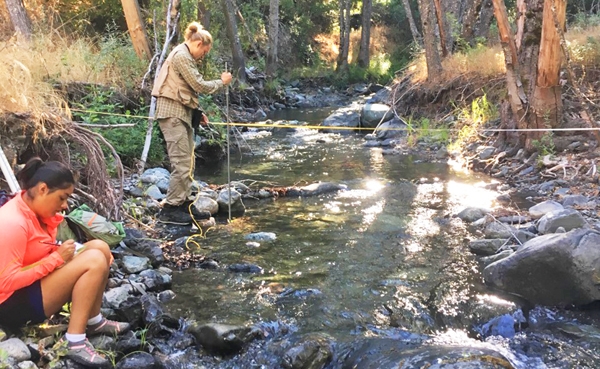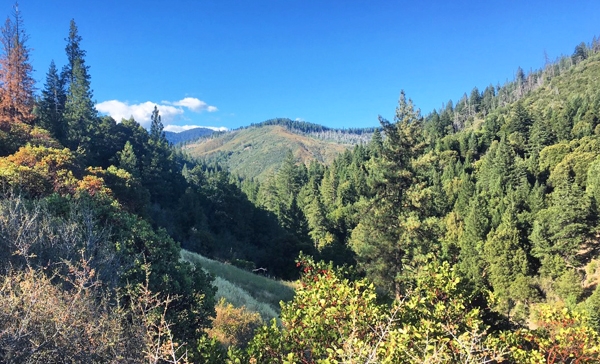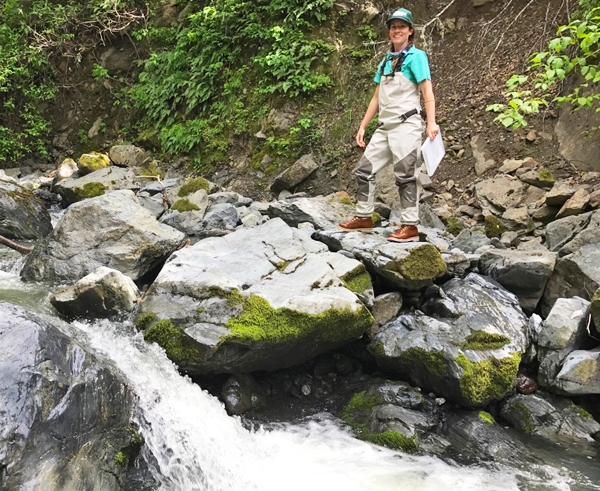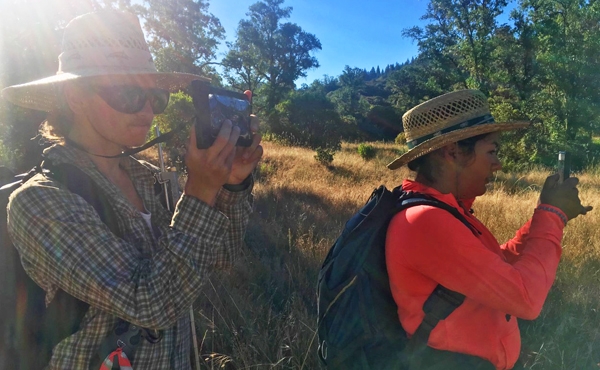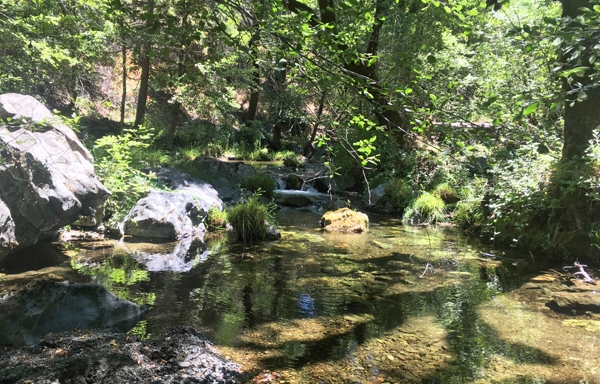On a long dammed river in northwestern California, researchers are determining how many Chinook salmon and steelhead trout could live upstream of the dam if given the means to pass. The endeavor has meant intensive field work in some of the most remote parts of the state.
The Eel River watershed is the third largest contained completely within California. It once had the state's biggest Chinook salmon run. Historic estimates of salmon and trout populations are upwards of one million fish running the river and its tributaries annually as they migrated from the Pacific Ocean and back to spawn. Current estimates are at between one and three percent of these historic populations.
The reduction in these fish populations is due in part to two dams – the Cape Horn and Scott dams – both constructed and completed in the early 1900's. While Cape Horn has a fish ladder that allows salmon to get upstream to spawn during certain flows, Scott Dam completely blocks migration. The now blocked habitat upstream of Scott Dam was historically used by both juvenile and adult populations of salmon and trout, and has the potential to sustain them now as well.
Scott Dam is up for federal re-licensing in 2022, and scientist Alison O'Dowd and graduate student Emily Cooper of Humboldt State University are quantifying salmonid habitat upstream of the dam. The researchers hope to better understand how many fish might be able to live upstream if passage was restored.
To that end, Cooper spent eight weeks bushwhacking and camping in the backcountry of the upper Eel River watershed, most of which is contained in the Mendocino National Forest. Field sites were chosen by random sampling, which meant most were not accessible by trails. It also meant camping without access to running water or cell signals for days at a time.
Cooper and a team of undergraduate students, including Ariel Dasher, Erik Daniels, Erik Kenas, and Mason Price, surveyed 31 remote stream reaches. The group used protocols from the California Department of Fish and Wildlife's Salmonid Stream Habitat Restoration Manual (Part III) to measure stream depths, the size of pools, and other habitat features important for salmon.
As they began their work, a major challenge popped up quickly: despite being marked as having year round flow, eleven of the sites turned out to be dry, most likely due to the prolonged drought. Although it was a demoralizing setback, the group kept going.
Ultimately, they were excited about what they found. “Seeing some of the really excellent habitat in parts of the upper Eel watershed was really magical. We found sites on tributaries that had cold water, deep pools, great riparian canopy, and suitable spawning gravel. So there are definitely some nice areas for spawning and rearing,” says O'Dowd.
Cooper echoes that sentiment, saying “One of the coolest things I encountered out there is the true wildness of the area. There are herds of elk, many deer, black bear, resident trout, reptiles, amphibians, and some of the biggest oak trees and manzanita stands I've ever seen. This season of fieldwork was definitely one for the books.”
Cooper is now back in the lab running models to quantify how many salmon the watershed could sustain based on habitat features. The product of her research will be an estimate of the river miles that could support anadromous salmonids, as well as the number of steelhead and Chinook the waterways upstream of Scott Dam could sustain if fish were given access to this area again. Cooper hopes her work will play a role in informing the decision on whether Cape Horn and Scott Dams are relicensed, and how salmon recovery management in the Eel River watershed proceeds.
